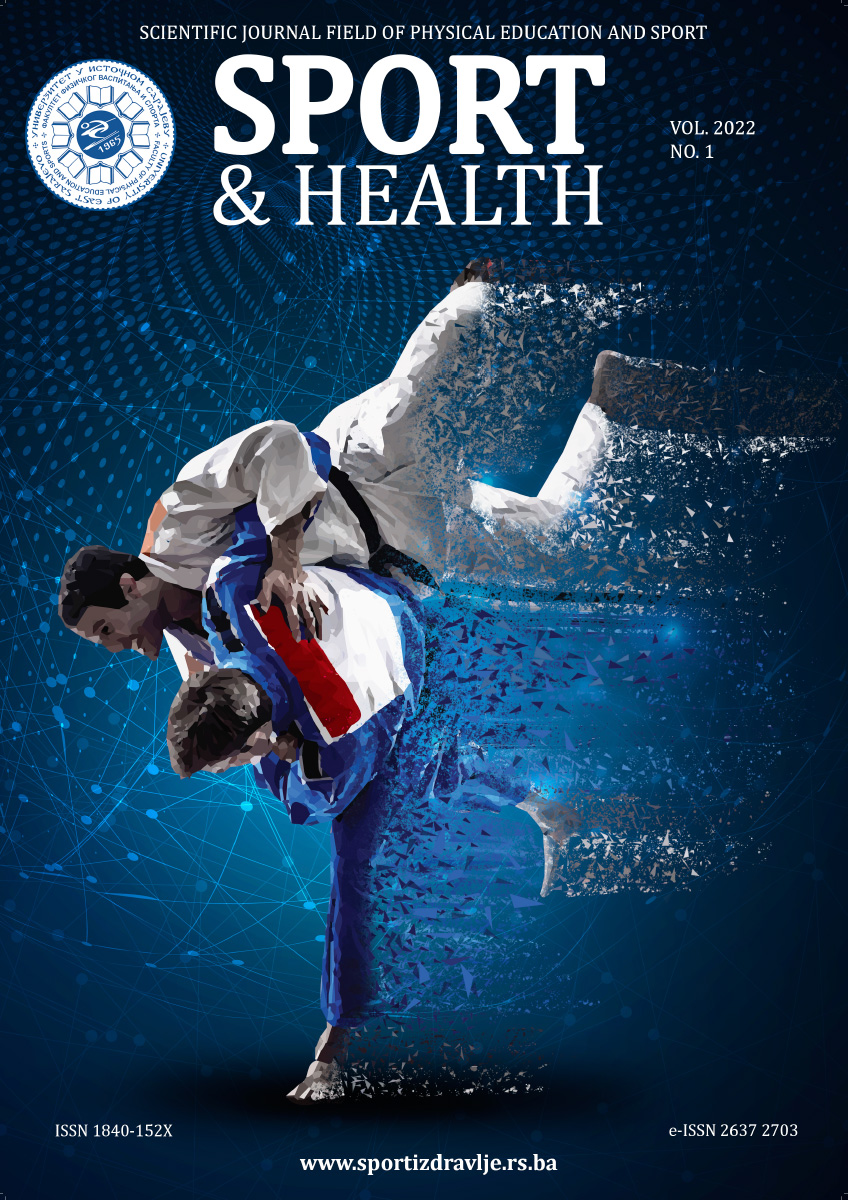GENDER DIMORPHISM IN MOTOR ASSESSMENT AND SELFASSESSMENT CAPABILITIES OF STUDENTS OF THE FACULTY OF SECURITY SCIENCES
DOI:
https://doi.org/10.7251/SIZ2201100PAbstract
On a sample of 147 students (78 male and 69 female), in the first year of the Faculty of Security Studies from Banja Luka, research was conducted with the aim of determining the differences between the achieved grade and the selfassessment of motor skills between male and female students, based on the results obtained by applying adequate tests for assessment and self-assessment of students motor status. Assessment of the motor abilities was performed through a battery of six tests: the maximum number of push-ups performed in 10 seconds (MSKL) - used to assess the dynamic strength of the arms and shoulder girdle, the standing long jump (MSDM) - used to assess the explosive power of the lower extremities, agility with with a club (MOKP) - used to assess the coordination of the whole body, the maximum number of trunk lifts performed in 30 seconds (MPTR) - used to assess the dynamic strength of the trunk, hand tapping (MTAR) - used to assess the frequency of arm movements, forwardroll – back roll - running (MKNT) – used to assess the motor ability of agility. For the self-assessment of motor skills, a constructed questionnaire with six answers was used: excellent (5), above average (4), average (3), below average (2), bad (1) and very bad (0). The respondents showed a good self-assessment of motor skills, where a statistically significant difference between male and female students was recorded only in the variable for self-assessment of dynamic arm and shoulder girdle strength. Male students showed better self-assessment in the variables for assessing dynamic arm and shoulder girdle strength, dynamic trunk strength, body coordination and hand movement frequency, while female students showed better self-assessment in variables for assessing explosive leg strength and agility. The authors recommendation is that the method of self-assessment of motor skills be implemented in the teaching process, when teaching the subject Special Physical Education 1, in order to improve awareness of the role and importance of the anthropological status of students and to encourage them to exercise regularly.

